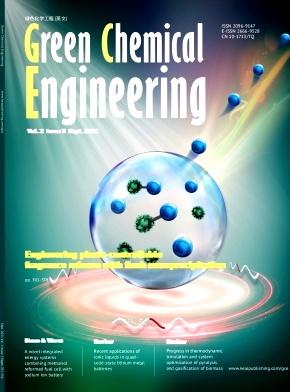Evaluating ionic liquid toxicity with machine learning and structural similarity methods
IF 9.1
Q1 ENGINEERING, CHEMICAL
引用次数: 0
Abstract
Ionic liquids (ILs) have garnered significant interest owing to their distinct physicochemical traits. Nonetheless, their extensive application is curtailed by ecotoxicity concerns. This study aimed to develop a quantitative structure-activity relationship (QSAR) model for predicting the toxicity of ILs in biological cells. Toxicity data of ILs on leukemia rat cell line IPC-81, Escherichia coli (E. coli), and acetylcholinesterase (AChE) were collected from open-source databases, and two integrated models, random forest (RF) and gradient boosted decision tree (GBDT), were used to train the data. The molecular structures of the ILs were represented by three different methods, namely molecular descriptor (MD), molecular fingerprint (MF), and molecular identifier (MI), respectively. The Tanimoto similarity coefficients indicate that MD has a stronger ability to recognize structural similarity. Statistical metrics of model performance showed that the two models (MD-RF and MD-GBDT) with MD as an input feature performed better in the three datasets. The application of the SHapley Additive exPlanations (SHAP) method explains the importance of different features. Specifically, reducing the carbon chain length and the number of fluorine atoms in the structure of ILs can effectively reduce their toxic effects on biological cells. This study employs machine learning to grasp better how the structure of ILs relates to inhibiting biotoxicity, offering insights for crafting safer, eco-friendly IL designs.

用机器学习和结构相似方法评估离子液体毒性
离子液体以其独特的物理化学特性引起了人们的极大兴趣。然而,它们的广泛应用受到生态毒性问题的限制。本研究旨在建立一种定量构效关系(QSAR)模型来预测il在生物细胞中的毒性。从开源数据库中收集il对白血病大鼠细胞系IPC-81、大肠杆菌(E. coli)和乙酰胆碱酯酶(AChE)的毒性数据,采用随机森林(RF)和梯度增强决策树(GBDT)两种集成模型对数据进行训练。分别用分子描述符(MD)、分子指纹(MF)和分子标识符(MI)三种不同的方法来表征分子结构。谷本相似性系数表明,MD具有较强的结构相似性识别能力。模型性能的统计度量表明,以MD为输入特征的两种模型(MD- rf和MD- gbdt)在三个数据集中表现更好。应用SHapley加性解释(SHAP)方法解释了不同特征的重要性。具体来说,减少il结构中的碳链长度和氟原子数可以有效降低其对生物细胞的毒性作用。本研究采用机器学习来更好地掌握IL的结构与抑制生物毒性的关系,为制作更安全、环保的IL设计提供见解。
本文章由计算机程序翻译,如有差异,请以英文原文为准。
求助全文
约1分钟内获得全文
求助全文
来源期刊

Green Chemical Engineering
Process Chemistry and Technology, Catalysis, Filtration and Separation
CiteScore
11.60
自引率
0.00%
发文量
58
审稿时长
51 days
 求助内容:
求助内容: 应助结果提醒方式:
应助结果提醒方式:


